Identity area
Reference code
Title
Date(s)
- 1958 - 2013 (predominant 1980 - 2002) (Creation)
- 1958 - 2013 (predominant 1980 - 2002) (Creation)
Level of description
Fonds
Extent and medium
1039.76 linear feet of textual records, maps, technical drawings, and computer disks
Context area
Name of creator
Biographical history
Sector departments were created as part of a World Bank-wide reorganization in 1972. The sector departments were responsible for improving and maintaining the quality of Bank lending and related operations through activities such as: sector policy and guideline development; support and review of operations; recruitment assistance; staff development and training; and liaison with external organizations. Although some sector departments including the energy sector had operational responsibilities for nearly a decade and were involved in the administration of global program projects, sector departments were generally not responsible for leading project lending operations and member country relations. The Bank's projects and member country relations were, in turn, the responsibility of regional vice presidencies (RVPs). See the related units of description note below for the location of records relating to World Bank operations and the RVPs.
The Bank's energy sector work (formerly referred to as power sector) began in the Economic Department (created April 19, 1948 to September 1952) and the Technical Operations Department (TOD) (September 1952 to January 18, 1965). These departments had similar responsibilities for operational and sector work, providing expertise and assistance for projects and studies. TOD was structured functionally with sub-units for power, industry, agriculture, transportation and so on.
The Bank's first loan in the energy sector was also its first development loan and the first loan to a non-European country. In 1948 the Bank approved a loan to Chile to develop hydroelectric power Power and Irrigation Project, P006578. The only nuclear energy loan was the Nuclear Power Project, P037419 approved in 1959 to help finance Italy's first nuclear plant.
1965 - 1972
A reorganization of TOD created the Projects Department (PRJ) on January 18, 1965. PRJ was responsible for the identification, appraisal, and supervision of projects, as well as policy formulation, research, and advice in support of the operational activities of the area departments. A separate energy sector unit was first articulated in the Bank's organizational chart as a lower division of PRJ. The Public Utilities Division (PRJPU) was responsible for energy issues with the focus on electric power development. Other divisions subordinate to PRJ were: Agriculture Division (PRJAG); Education Division (PRJED); Transportation Division (PRJTP); and Industry Division (PRJIN). On January 1st, 1967, water sector functions were transferred into PRJPU.
On November 1, 1968, PRJ was terminated and the subordinate divisions were upgraded to the department level. One of these departments was the Public Utilities Projects Department (PBP), which maintained responsibility for the energy sector from the prior division. PBP continued to carry out the full range of activities related to theenergy sector, specifically:
-
providing advice, conducting research, and monitoring developments in sector issues;
-
carrying out sector studies with the objective of identifying projects and determining priorities within sectors;
-
preparing policy papers outlining the basic principles and approaches of the Bank relating to project and sector work;
-
preparing guidelines and standards;
-
appraising proposed projects and supervising projects in execution;
-
assisting in the identification and preparation of projects;
-
providing operational support in the negotiation and administration of loans and credits;
-
cooperating with other international agencies on programs of common interest.
PBP comprised the following divisions: Power Division I (PBPP1); Power Division II (PBPP2); Power Division III (PBPP3); Water Supply Division I (PBPW1); and the Telecommunications Division (PBPTE). In or around January 1970, another Water Supply Division II (PBPW2) was established in the department.
1972 - 1986
Inthe October 1972 reorganization, most of the PBP staff were dispersed to regional projects departments in newly established regional vice presidencies to more effectively fuse country knowledge and sector skills. This left PBP with a core staff of advisors responsible for operational and development policy, research, operational support, and quality control of project and sector work. Led by Director Yves Rovani, PBP was contained within the Central Projects Staff Vice-Presidency and it was composed of thefollowing divisions: Power Division I (PBPP1); Power Division II (PBPP2); Power Division III (PBPP3); Water Supply Division I (PBPW1); and the Telecommunications Division (PBPTE).
The primary responsibility of the Public Utilities Department's Central Projects staff was to improve and maintain the quality of Bank lending and related operations through: formulating policies, methodology and guidelines; providing operational support and advice; and through related programs of recruitment assistance, staff development, and education. They were also responsible for: reviewing operational documents and providing guidance and advice to regional offices; developing systems to monitor the project cycle; developing analytical tools such as appraisal and forecasting models; and liaising with relevant external organizations. Their role was to advise, guide, cross-fertilize among regions, train, evaluate, and provide intellectual leadership. Additionally, in the case of the decentralized sectors (Public Utilities, Education, Transportation and non-African Development Finance Companies), specialized personnel assigned to Central Projects Staff were loaned to the Regions to work under the full operational control and direction of the appropriate regional division chief and mission leader for the duration of the assignment.
At this time, numerous papers were produced by the recently restructured department, including a new series of papers outside of the established policy and research series governed by Bank rules. These series comprised public utility notes and "cutting edge" papers and guidelines to operational staff on a wide range of topics such as how to do sector work or to estimate costs. When the first oil crisis occurred in late 1973, the department was asked to contribute reports on the impact of higher prices and prospects for the energy supply of oil-importing developing countries. A follow up study by the French Petroleum Institute commissioned by the department in 1974 described the significant potential forexploration and development of petroleum (both oil and natural gas) in many developing countries. The study also made the case for the Bank to overturn its policy to finance petroleum development by recognizing a clear role for the Bank in attracting private sector companies and helping national oil companies develop their petroleum production as an indigenous energy supply. On April 1, 1976, the Public Utilities Department was renamed Energy, Water and Telecommunications Department (EWT) to clarify its functional responsibilities. No structural changes accompanied the renaming of the department. Then, on November 1, 1977, following the approval by the Board of Directors in June 1977 of the Bank's first petroleum development loan Bombay High Offshore Development Project, P009721 and Board approval in July 1977 for an expansion of lending for developing fuel and non-fuel mineral resources in developing countries, a Petroleum Projects Division (EWTPP) was established in the department. EWTPP's primary purpose was to better expedite the requests for assistance from member governments. The pipeline work program and its responsible petroleum engineer in the Transportation Department was transferred to EWTPP.
On January 16, 1979, the sector report "Program to accelerate petroleum production in developing countries" was requested by the Board to review the sector policy and experience one year after the program expansion. The report recommended expanded assistance in energy development, including activities such as devising national energy plans and policies of oil-importing developing countries, predevelopment work, and expansion of lending for fuel production. Loans for oil and gas exploration to evaluate potential were also to be considered.
On July 1, 1979, the Energy, Water and Telecommunications Department was terminated. Functions related to the energy sector were upgraded to an independent Energy Department (EGY), and the water supply and telecommunications functions were transferred to the Transportation Department to form the new Transportation, Water and Telecommunications Department (TWT). The Energy Department was established to provide unified, full-time leadership to implement the Bank's rapidly expanding program to accelerate petroleum production in developing countries. Functioning as a central operating projects department (COPD), EGY had operational responsibilities with regard to oil and gas and electric power, including technical assistance in national energy planning and petroleum legislation, and assessing and helping develop renewable and non-conventional energy sources. The latter included expansion of fuelwood production, and solar, thermal, hydro, and wind power. In addition, the department would be responsible for policy and research, as well as operational advice and support for all energy sector and project work. EGY was composed of the following subordinate units: Petroleum Projects Division (EGYPP); Energy Policy Advisory Staff (EGYEP); and Operations Advisory Staff (EGYOP).
Less than a year later in May 1980, the Energy Department was restructured to absorb staff increases and carry out its increased work program. The former Petroleum Projects Division (EGYPP) was split into the Petroleum Projects Divisions I (EGYD1) and II (EGYD2), and a new Petroleum Projects Exploration Staff (EGYES) was established. The Operations Advisory Staff (EGYOP) was renamed Energy Operations and Review Staff (EGYOP). Between 1979 and 1981, missions to review the coal sector and Bank lending in low- and lower-middle income countries for the generation and transmission of electric power also increased, with new emphasis on hydropower and coal-fired thermal plants.
The global energy crisis of the 1970s also launched a partnership between the Bank and United Nations Development Programme (UNDP) in November 1980. The Energy Assessment Programme (EAP), funded by the Bank, UNDP, and a small number of bilateral donors, was formed as a technical assistance program to help low- and lower-middle income governments, particularly oil-importing countries, diagnose their most serious energy problems and evaluate the options for alleviating these problems. Energy assessments were designed to be action documents focused on priority issues. All assessments were published following the missions and available to experts, donors, and investors. The program initially called for assessments in 60 countries over five years and was later increased to 76 countries.
In July 1981, the Energy Department was again restructured, accommodating further staff increases and the Bank's progressing energy program. A unit was created for increased support to EAP. Still reporting to the Office of the VP, Projects Staff (CPSVP), EGY staff were organized into three complexes:
-
The first complex was led by the assistant director, Petroleum, who was responsible for the two operational Petroleum Projects Divisions (EGYD1) and (EGYD2), a small Petroleum Advisory Staff, and a petroleum adviser;
-
The second complex was led by the assistant director, Energy Policy and Assessment, who was responsible for the Energy Assessments Division (EGYEA), a small Economic Advisory Staff (EGYEC), and the economic adviser;
-
The third complex was led by the senior adviser, Energy Operations and Review (EGYOP) who was responsible for a staff of advisers delivering operational support and advice to the Regions, and for the New and Renewable Energies Unit (EGYNR).
EGYEA was initially staffed with six Bank staff and fifteen externally recruited staff funded by UNDP. The division worked closely with the Bank's regional operational departments which were involved in the design, review, and dissemination of the country assessments.
In March 1982, CPS was restructured and renamed the Operations Policy (OPS). Within the OPS complex, a new vice presidency for Energy and Industry Staff (EIS) was established. EIS combined the two sectors in two departments, EGY and a newly created Industry Department (IND) each led by directors, that reported to the Office of the Vice President Energy and Industry (EISVP). Senior Vice President, Operations Policy (SVPOP) Ernest Stern served as acting vice president, EISVP until fall 1983 with the appointment of Jean-Loup Dherse. Yves Rovani continued as director of EGY.
With the experience of lending in several countries for oil and gas, power, and the EAP energy assessments, the department issued a comprehensive review and policy paper in April 1983 titled "The energy transition in developing countries". The report outlined the measures necessary to facilitate the transition process to energy strategies appropriate to the current level of oil prices. These included reasonable pricing of energy and better demand management to improve efficiency in energy use; redirection of industrial, agricultural, and transport development; and expanding development of indigenous sources of energy.
In April 1983, the Energy Sector Management Assistance Program (ESMAP, initially spelled Energy Sector Management Assistance Programme and originally identified as ESMP) was jointly created by the Bank and UNDP as a companion to the Energy Assessment Program (EAP) to act partly as a pre-investment facility and to follow up on EAP assessments. Since its establishment through 2022, ESMAP continues to be financially supported by the Bank, UNDP, and various bilateral and multilateral donors. ESMAP would assist countries to implement the main investment and policy actions recommended in the assessments. Specific activities included: energy assessment status reports that evaluated achievements made since the initial assessment and identified critical issues still pending; project formulation and justification work to accelerate the preparation and implementation of investment projects; and institutional and policy support.
EGY was the executing agency of EAP and ESMAP on behalf of the Bank. EGY provided budgetary support, staff, management support, and overhead expenses to the programs. Staff continued to work out of EGYEA and included a mix of technical, engineering, economic, and financial expertise from the public and private sectors. The UNDP Division for Global and Interregional Projects, with technical support from EGY, was initially responsible for the management of financial and donor relations. The UNDP division and EGY jointly managed the scope and direction of ESMAP work and development of new initiatives. In individual countries, the UNDP Resident Representative's office participates in the planning and work of field missions. At the time of ESMAP's creation, the Energy Department set up its divisions to reflect ESMAP operational priorities.
In September 1985, the department was reorganized to strengthen its policy and review activities and divide the workload of the Energy Assessment Division (EGYEA). Except for the Petroleum Projects Division I (EGYD1) and II (EGYD2), all subordinate units of the Energy Department were terminated. The new Energy Policy and Advisory Division (EGYPA) absorbed most of the advisory staffs, and centralized the formulation, dissemination and monitoring of energy policy. The new Energy Strategy and Pre-investment Divisions I (EGYS1) and II (EGYS2) absorbed most of the staff of the former Energy Assessments Division (EGYEA) and took on responsibility for: Bank/UNDP technical assistance for EAP and ESMAP; all energy sector work; and the preparation and supervision of Bank energy projects.
In January 1986, Energy Department Director Anthony A. Churchill chaired a consultative meeting in Paris consisting of representatives from seventeen donor countries, nineteen recipient countries of ESMAP, and multilateral partners to undertake a full-scale review of the EAP and ESMAP programs. EAP was nearing completion, and the consultative meeting came to the consensus that, despite the softening of oil prices, the fundamental energy problems of low- and lower-middle income countries merited continued assistance. The decision was made that ESMAP would incorporate the assessment function and expand its activities to address power system reduction, household energy, and the link between energy and environment. It was also proposed at this meeting that an annual meeting of the donors be held to review future directions andfunding requirements with representatives of the UNDP and the Bank.
During this time, the Bank began supporting financial rehabilitation, conservation, and environmental management in the electric power system, encouraging governments to increase tariff levels to ensure financial viability in the power sector and to provide funds for expansion. The Bank also continued supporting efforts to increase local manpower and institutional capacity to make power suppliers more efficient.
1987 - 1996
On July 1, 1987, a Bank-wide reorganization resulted in the termination of almost all organizational units. The Energy Department was relocated into the newly created Sector Policy and Research Vice Presidency (PRE, then PRS). As a result of the reorganization, PRE had no responsibility for managing operational activities. The vice-presidency focused on operational support, the formulation of Bank-wide sector policies, and overseeing the ex post evaluation of Bank-wide sector work and lending. The units within the vice presidency concentrated on policy creation and analysis, support for operations, and sectoral research for emerging priority areas of the Bank. Within the PRE Vice Presidency, the energy and industry sectors previously under EISVP were merged into the Industry and Energy Department (IEN).
Led by Churchill, IEN divisions included: Industry Development (IENIN); Energy Development (IENED); and Energy Strategy, Management and Assessment (IENES). IENES under Division Chief Robert J. Saunders had first line responsibility for the overall management of ESMAP. The two units under IENES that carried out ESMAP activities were the Household Energy Unit (IENHE) and Energy Efficiency and Strategy Unit (IENEE). IENHE was responsible for all of ESMAP's work in the household, rural and renewable energy areas. IENEE was responsible for developing improved methodologies in the analysis of the efficiency of energy use, and for carrying out energy strategy work outside of the household. The core of professional staff working on the ESMAP program basically remained the same as before the reorganization.
A small team in IEN also provided services to the program such as budgeting, coordinating donor relations, and public relations. At some point in 1987, the Bank and UNDP agreed on the appointment of a senior staff member in IEN to serve as a donor relations manager to liaise with UNDP and to coordinate arrangements for the donors annual meeting. The donor relations manager worked closely with his counterpart in UNDP's Division for Global and Interregional Projects, which shared responsibility with the Bank for the overall management of the program. The director of IEN had overall responsibility from a policy standpoint for the implementation of the program.
By 1989 the Natural Gas Development Unit (IENGU) was created under IENES at the urging of ESMAP shareholders to meet the needs of the program. Activities of IENGU were to promote the development and use of natural gas in low- and lower-middle income countries, provideoperational support, and carry out research and policy work in the gas sector and related environmental areas.
60 percent of Bank energy lending in the late 1980s was directed to electric power. The remainder of funds covered thermal coal, hydropower, geothermal, and oil and gas exploration. While Bank policy did not permit financing of nuclear power plants, the sector cooperated with the International Atomic Energy Agency (IAEA) in reviewing economic and financial aspects of development programs whichcould also include nuclear power.
In November 1990, the report "ESMAP in the nineteen-nineties" presenting the recommendations of an international commission of development and energy experts chaired by Bank Senior Vice President of Policy, Research and External Affairs Wilfred Thalwitz, was endorsed at the ESMAP annual meeting. The commission's findings prompted an extensive reorganization and reorientation of the program and establishment of a consultative group made up of donor representatives and independent energy experts from developing countries to provide strategic guidance and oversight. A new governance structure of the ESMAP Consultative Group (CG) and a Technical Advisory Group (TAG) was also created. Implementation and management of ESMAP activities would continue to be the responsibility of the Bank within IEN. The commission also recommended that ESMAP concentrate on making long-term efforts in a smaller number of countries.
In January 1991, a reorganization of the three former ESMAP divisions to adjust to ESMAP's new reorientation and country-based focus resulted in the creation of ESMAP Strategy and Programs (ESMPD) and ESMAP Operations (ESMOD) together with the existing IENIN and IENED divisions under IEN Director Churchill. ESMPD was responsible for advising which countries should receive ESMAP assistance, preparing relevant ESMAP programs of technical assistance to these countries, and country strategy work. ESMPD also had prime responsibility for carrying out the ESMAP assessments, or country papers. ESMOD was charged with the design and implementation of tasks mainly consisting of sub-sectoral strategy formulation, pre-investment work, institutional studies, and providing technical and subsector expertise including in: a) gas, oil and refinery technical issues; b) energy efficiency, environment, power and coalc) renewable and household energy; and d) restructuring, reforms and privatizations.
On December 1, 1991, as part of President Lewis Preston's first reorganization, which abolished all Senior Vice Presidencies, the new Sector and Operations Vice Presidency (OSP) was created and adopted functions previously supervised by senior vice presidents. Following this reorganization, ESMAP was removed from the Industry and Energy Department (IEN) and established as its own unit led by Manager Richard D. Stern, Office of the ESMAP Manager (ESMMR). Under the manager was an adviser, an executive secretary of the ESMAP CG, and the two previously established divisions, ESMPD and ESMOD.
Industry and Energy Department maintained two previously created divisions, Industry Development (IENIN) and Energy Development (IENED).
The department was responsible for:
-
formulating policies in the energy and industry sectors;
-
developing research priorities and conducting background research necessary to support policy development;
-
strengthening the Bank's intellectual leadership in the sector;
-
providing advice to the Regions for the design of country strategies and sector operations;
-
disseminating research results;
-
conducting an annual review of Bank operations in the sector;
-
developing and maintaining contact with the external community.
On January 1, 1993, as part of a larger initiative to align the Bank's organization with the priority areas of its poverty reduction effort, the Sector and Operations Policy Vice Presidency (OSP) was terminated. On January 1, 1993, as part of a larger initiative to align the Bank's organization with the priority areas of its poverty reduction effort, the Sector and Operations Policy Vice Presidency (OSP) was terminated. All research activities were removed from the departments in the Central Vice Presidencies, including IEN, and were consolidated under the Chief Economist and Vice President for Development Economics (DECVP). The Policy Research Department (PRD) under DECVP became the principal research arm of the Bank; IEN was no longer responsible for energy or industry sector research.
OSP was replaced by three new thematic vice presidencies: Human Resources Development and Operations Policy (HRO), Finance and Private Sector Development (FPD); and Environmentally Sustainable Development (ESD). At the time of its establishment Finance and Private Sector Development (FPD) had three subordinate departments:
-
Financial Sector Development Department (FSD);
-
Private Sector Development Department (PSD); and
-
Industry and Energy Department (IEN)
Each sector department was responsible for the following:
-
prepare policies, guidelines, standards, handbooks and analytical tools relevant to the sector;
-
identify, codify and disseminate best practices and lessons of experience, and evaluate weaknesses;
-
provide advice to the Regions as needed;
-
monitor and track work in the sectors assigned in order to identify generic issues and identify, evaluate and influence trends and patterns;
-
perform surveys of experience and practice within the Bank and elsewhere, and develop innovative approaches;
-
participate in Bank-wide efforts to assess skill requirements, and to upgrade skills through recruitment, training, orientation, seminars, newsletters, etc.
-
represent the Bank to external communities of interest;
-
maintain an awareness of relevant external practices and viewpoints.
The reorganization also reintegrated ESMAP and IEN to position the program in a strengthened central department for closer coordination of its activities with the Bank and to allow ESMAP to operate at a reduced level of funding. Richard D. Stern was appointed to serve in the dual capacity of IEN director and ESMAP manager, still under FPD Vice Presidency. In the same year, the ESMAP CG abolished the secretariat and its functions were taken over by the IENDR front office. The country focus, now central to ESMAP's approach, resulted in closer day-to-day cooperation between ESMAP and the Bank. In addition, staff from the Bank's country departments were increasingly assuming responsibility for leading ESMAP's energy country strategy work.
The IEN reorganization created five divisions: Power Development, Efficiency and Household Fuels (IENPD); Energy Policy and Strategy (IENEP); Oil and Gas (IENOG); Industry and Mining (IENIM); and Telecommunications and Informatics (IENTI). The chiefs of the former ESMAP divisions, Trevor Byer (ESMPD) and Hossein Razavi (ESMOD), became the division chiefs of IENEP and IENOG, respectively.
In 1993, an Energy Sector Board was created to discuss major issues emerging in the sector. Sector Board membership consisted of twenty senior staff including regional advisers, division chiefs including IEN, and representatives from the Operations Evaluation Department (OED) and International Finance Corporation (IFC).
Another restructuring of IEN energy units effective February 15, 1994 was implemented as a "fine-tuning" of the energy functions of the department. The INEP unit was dissolved. A portion of the IENEP staff was transferred to the IEN Director's Office to carry out the energy practice function under the supervision of a newly established energy advisor position, and the remainder of staff merged into IENPD. The second division, IENOG, remained unchanged.
Also during this period, IEN published a policy paper in June 1993, ("The World Bank?s Role in the Electric Power Sector"]( https://documents.worldbank.org/en/publication/documents-reports/documentdetail/477961468782140142/the-world-banks-role-in-the-electric-power-sector-policies-for-effective-institutional-regulatory-and-financial-reform) focused on the interrelated institutional, regulatory, and financial reform issues in improving power sector performance.
1997 - 2014
Three years later, in 1997, the thematic Vice Presidencies were reorganized by World Bank Group President James D. Wolfensohn to strike a better balance between country focus and sectoral excellence. To facilitate sharing of expertise and knowledge, the Bank established networks that linked Bank-wide communities of staff working in the same field across organizational boundaries and with external partners. The networks formed a virtual overlay on the existing Bank organization, and were intended to link staff working in the same sectors throughout the Bank, whether the staff was located in the Regions, in the Central Vice Presidencies' sectoral departments, or other vice presidencies.
Each of the three thematic Central Vice Presidencies was transformedinto the central units, or anchors, of each Network and were embodied in the existing sector departments. On a Bank-wide basis, sector specialists were grouped into regional sector units or into central sector departments which worked with country departments in a matrix relationship.
Each Network Anchor had a Network Council to oversee the entire network, and sector boards covering the individual sectors within a network. The Network Council was composed of the top network managers from each Region and was responsible for setting the overall agenda for the network and for promoting the effective deployment of skills across network units. Sector boards brought together the sector leaders from each Region and from the central vice presidencies. Staff from the central sector departments could become part of the regional operational teams when their sectoral expertise was required. The work programs of network staff focused on:
-
global knowledge - putting the best development knowledge in the hands of Bank task teams; ensuring that the knowledge base was accessible to external clients; and contributing to the growth of the knowledge base;
-
enhanced skills - developing and providing content to training courses; establishing professional and technical standards for professional development;
-
shared strategies - assisting regional and central units to develop a common sector agenda, and ensuring that skills are effectively deployed across the entire network. Network leadership assumed responsibility for global programs, sector strategy development and evaluation, strategic partnerships, and learning and dissemination;
-
best teams and best practices - improving the Bank's flexibility and mobility by building stronger task teams and delivering higher quality products;
-
institutional initiatives - providing substantial support for new Bank-wide initiatives, such as Social Development, Rural Development, Financial Sector, Anti-corruption, Human Resources, and Knowledge Partnerships.
The next five years following the Bank-wide 1997 reorganization were marked by a series of Bank Group organizational changes and transfers of certain sectors and subsectors. As part of the 1997 reorganization, FPD was terminated and replaced with the Finance, Private Sector Development and Infrastructure Network (FPSI). The FSD, PSD and IEN departments were transferred to FPSI, joining the new Transportation, Water, and Urban Development Department (TWU).
James Bond was appointed IEN director and chair of the Energy and Mining Sector Board. By January 1998, IEN units were each led by a manager and included Energy (IENPD), Industry and Mining (IENIM), Oil and Gas (IENOG), and Telecommunications and Informatics (IENTI). The ESMAP and InfoDev programs were also functional responsibilities of IEN, each led by a manager. Dominique Lallement served as ESMAP program manager from 1998 to at least 2005, reporting to the sector director. Lallement was later succeeded by Amarquaye Armar. InfoDev was created in 1995 as a multidonor program focused on information and communication technologies for development. IEN's name changed to Energy, Mining and Telecommunications Department in late 1997 or early 1998 but its acronym did not change to EMT until several months later.
In November 1998, a Sector Strategy Paper prepared jointly by the Bank and International Finance Company (IFC), with input from external stakeholders, was submitted to the Board. The paper, entitled "Fuel for thought: an environmental strategy for the energy sector" had solicited comments from external stakeholders and was published in June 2000. The report included a section that reviewed the Bank Group's existing policies, strategy, and record in the sector.
In early 1999, President Wolfensohn announced the need for greater integration of Bank operations and its International Finance Corporation (IFC) affiliate, which specialized in private sector development advisory and investment services. As a result, in February 1999, FPSI was terminated in place of the joint World Bank and International Finance Corporation (IFC) Private Sector Development and Infrastructure Development Vice Presidency (PSIVP). Functions and staff from PSD, EMT, and TWU departments of FPSI were transferred to the new PSIVP and the Project Finance and Guarantees Department (PFG) was also mapped into PSIVP. EMT energy functions were organized into the Energy Unit (EMTEG), Oil and Gas Unit (EMTOG), and ESMAP (EMTES), all reporting to the Office of the Director (EMTDR).
In January 2000, to improve the effectiveness of private sector development work, IFC and Bank departments were combined in selected global industry product groups. PSD and parts of EMT, including EMTOG, were mapped into the newly established product groups, or joint departments, that integrated IFC and Bank business activities. The joint departments reported to both PSIVP and IFC Operations Vice Presidency and included the following units: Private Sector Advisory Services (PSAS); Small and Medium Enterprise Department (SME); Oil, Gas, and Chemicals Department (COC) led by Director Rashad-Rudolf Kaldany; Telecommunications and Informatics (CIT); and the Mining Department (CMN).
As part of the 2000 reorganization, EMT was dissolved, and the energy function became situated under the Infrastructure and Urban Development Department (INF) led by Director Frannie Leautier, still reporting to PSIVP. INF comprised the following units, each led by a manager: Energy (INFEG), Transport and Urban (acronym unknown), and Water and Sanitation (INFWS). INF was soon dissolved following another reorganization effective July 1, 2001 that created the Energy and Water Department (EWD) and the Transport and Urban Development Department (TUD). EWD and TUD were not joint Bank and IFC departments, and still reported to PSIVP. EWD, led by Director Jamil Saghir, contained the following units: Energy Unit (EWDEN), ESMAP (EWDES), Water and Sanitation Unit (EWDWS), Water Supply and Sanitation Program (EWDWP) and four Water and Sanitation Program units based on regions.
In 2002, CMN was merged with COC to form the new Oil, Gas, Mining, and Chemicals Department (COC) in PSIVP as an efficiency and cost-saving measure. COC continued to be led by Director Kaldany under the previous reporting structure. COC comprised the following six units each headed by a manager: IFC Oil and Gas Division (COCD1); Investment Division (IFC Mining, [COCIN]); IFC Chemicals Division (COCD2); Portfolio and Credit Review Division (COCCP); Policy Division, IBRD Oil and Gas (COCPO); and Policy Division, IBRD Industry and Mining (COCPD).
In May 2003, a subsequent reorganization terminated PSIVP and split its functions and staff among the new joint IFC and World Bank Private Sector Development Vice Presidency (PSDVP) and the Bank's Infrastructure Network (INF). COC, CIT, EWD, and TUD were mapped into the INF Network. By 2005, COC units included: Mining (COCIN); Chemicals (COCD2); Portfolio and Credit Review (COCCP); and Policy Division, IBRD Oil, Gas and Mining (COCPO).
In the early 2000s, COC became involved in several key initiatives and partnership programs. In June 2000, at the Annual Meeting in Prague, Bank Group President James D. Wolfensohn responded to criticism from the nongovernmental community about Bank Group involvement in extractive industries with a pledge to review the Bank Group's role in this sector. The Extractive Industries Review (EIR) was initiated in July 2001 with the appointment of Dr. Emil Salim, former minister of the environment for Indonesia, to lead the review. EIR examined Bank Group activities in the oil, gas, and mining sector, collaboration between sister organizations, and whether the Bank Group's involvement in the extractive industries was consistent with its goals of alleviating poverty through sustainable development. Activities of the review included multi-stakeholder consultations across broad groups worldwide, regional workshops, six research projects, project site visits, information consultations, and attendance at conferences. The final report of the review was published in December 2003 under the title, Striking A Better Balance: The World Bank Group And Extractive Industries). The report reaffirmed the mandate for Bank Group activities in these sectors with recommended measures to implement and enhanced focus on community development. As the EIR report was being prepared, the Extractive Industries Transparency Initiative (EITI), was launched in 2003. A year later, an EITI multi-donor trust fund was set up to help countries align their systems with the requirements of EITI and was managed by COC.
The Global Initiative on Gas Flaring Reduction, led by the Bank Group in collaboration with the Government of Norway, was launched in Marrakech in November 2000. The initiative aimed to support national governments and the petroleum industry in their efforts to reduce the flaring and venting of gas associated with the extraction of crude oil. A conference in Oslo followed in April 2002 to discuss the preliminary results and next steps, the first of which was a consultation of international and state-owned companies, governments of oil-producing countries, nongovernmental organizations (NGOs), and other stakeholders in the flaring problem. The initiative was presented at the World Summit on Sustainable Development held in Johannesburg in August 2002 where it transformed into the Global Gas Flaring Reduction Public-Private Partnership (GGFR), still in existence as of 2022.
In August 2002, the Bank joined with governments and multilateral institutions to launch the Global Village Energy Partnership, a program which aimed to double the number of people who gain access each year to lighting, heating, mechanical energy, and electrical power. Specific goals of the partnership were to reduce poverty in rural and semi-urban areas by linking 400 million people to electricity and cleaner fuels over a period of 10 years, and to provide 50,000 communities with power for productive uses, more modern schools, telecommunications, hospitals, and clinics.
In June 2004, the Bank Group announced its commitment to finance renewable energy and energy efficiency projects at an average growth of 20% per year over the next five years and to expediate and enlarge the Bank Group's coordination role to develop an action agenda on renewable and efficient energy development with stakeholders.
Two years later, in February 2006, a new tool was launched for development specialists to improve the design and implementation of renewable energy initiatives in developing countries. The Renewable Energy Toolkit: An Operational Guide for Electric Services (REToolKit) incorporated best practices and lessons-learned, and addressed implementation needs at each stage of the project cycle, aiming to lower the costs and the time for project preparation, to result in more effective renewable energy projects.
In June 2006 President Wolfowitz announced the consolidation of the former ESSD and INF Vice Presidencies into the Sustainable Development Network (SDN) with the objective of mainstreaming environmental issues, improving synergies, better integrating core operations, and strengthening focus on sustainability. SDN was operational on January 1, 2007. The aim of the network integration in relation to the energy sector was to:
-
Treat water issues more broadly by building water resource management strategies that cover agriculture, rural and urban dimensions, while linking these with energy and environment concerns;
-
Integrate more systematically rural development approaches in energy, transport, or ICT projects;
-
develop a holistic approach to climate change mitigation and adaptation, expanding the work on the clean energy investment agenda.
At this time, energy and water functions were combined with the transport sector to form the Energy, Transport and Water Department (ETW). This department was moved to the Sustainable Development Network (SDN). The energy units from the previous reorganization remained in ETW and only reflected a change in acronym: Energy Unit (ETWEN) and ESMAP (ETWES). COC was also moved to SDN. By September 2008, the four units under COC were: Chemicals, and Oil and Gas; Mining; Policy and Reform, Oil, Gas and Mining (COCPO); and Portfolio and Credit Review.
In September 2010, restructuring of SDN separated the energy function from transport and water and the following SDN departments were created: Environment Department (ENV); Agricultural and Rural Development Department (ARD); Concessional and Sub-National Finance (CSF); Finance, Economics and Urban Development (FEU); Sustainable Energy (SEG); Social Development (SDV); and Transport, Water, and Information and Communication Technologies (TWI).
SEG was led by Director Subramaniam V. (Vijay) Iyer, appointed in 2011. The priorities of the director were to: (i) provide strategic leadership and direction for the Bank Group's newly integrated sustainable energy and mining practice; (ii) provide leadership for the World Bank Group's Sustainable Energy Strategy, which will support access to clean, efficient, reliable and affordable energy; and (iii) enhance the alignment of the SDN network to support the green growth and knowledge agenda, skills and mobility of staff and the development of a strong energy and mining practice, while integrated with other sectors. Subordinate units of SEG included: Energy Unit (SEGEN), Oil, Gas, Mining Division (SEGOM), ESMAP (SEGES), and Extractive Industries (SEGEI). SEGOM was reorganized from the former COCPO, no longer a formal joint Bank/IFC unit, although "dotted line" links in the organization chart remained with IFC oil and mining group.
In terms of strategy and policy development, a new World Bank Group Energy Sector Strategy was initiated in 2009 to help countries achieve the objectives of improving the availability andreliability of access to modern energies and shifting to more environmentally sustainable energy development path. Global consultations were held with over 2000 participants representing government, civil society, private sector and academics who contributed comments on the approach paper. The Board began to evaluate the new energy strategy in 2011 and in 2013, the report "Towards a Sustainable Energy Future for All: Directions for the World Bank Group's Energy Sector" was published.
2014
On July 1, 2014, a Bank-wide reorganization introduced by Bank President Jim Yong Kim restructured the Bank into fourteen Global Practices (GPs) and five Cross-Cutting Solution Areas (CCSAs). Sector staff from the regional vice presidencies were removed and placed in the GPs or CCSAs. The GPs were responsible for each of the major thematic areas that the Bank supports through projects and functions as a vertical pillar of technical expertise. Responsibilities of the Energy GP include:
-
defining the strategic direction and the Bank's work in the energy sector;
-
providing reliable electricity to the unserved and inadequately served people of the world;
-
developing and deploying expertise globally;
-
delivering comprehensive solutions to client countries through environmentally and socially sustainable approaches;
-
capturing and leveraging knowledge in the energy industry.
SEG, established from the 2010 restructuring, now became Energy and Extractives Global Practice or EEX GP (GEEDR) reporting to the Sustainable Development Practice Group Vice Presidency (GGSVP), along with the GPs of Agriculture, Environment and Natural Resources, Social, Urban, Rural and Resilience, and Transport and ICT.
Anita M. George was appointed senior director, EEX GP and Charles M. Feinstein, director. The senior director continued to lead the Sector Board. EEX GP practice managers reporting to the director were responsible for the following units divided into Energy GP Africa 1 (GEE01), Energy GP East Asia and the Pacific (GEE02), Energy GP Europe and Central Asia (GEE03), Energy GP Latin America and Caribbean (GEE04), Energy GP MNA (GEE05), Energy GP South Asia (GEE06), GP Africa 2 (GEE07), Energy and Extractives Department 1 (GEED1), Energy and Extractives Department2 (GEED2), Energy and Extractives, and Energy Sector Management Assistance (GEEES).
Past directors and leaders of the sector:
1972 - 1986 Yves Rovani (director PBP, director EWT, director EGY)
1986 - 1993 Anthony A. Churchill (director, EGY then IEN)
1993 - 1997 Richard D. Stern (director, IEN)
1997 - 2000 James P. Bond (director, EMT)
1999 - 2000 Denis J. Clarke (sector manager, Energy Unit)
2001 - 2010 Jamal Saghir (director, EWD then ETW)
2011 - 2014 Subramaniam V. (Vijay) Iyer (director, SEG)
2014 - 2016 Anita M. George (senior director, Energy and Extractives GP)
2016 - 2020 Riccardo Puliti (senior director, Energy and Extractives GP)
Joint IFC/World Bank department directors:
2000 - 2002 Rashad-Rudolf Kaldany, director, Oil, Gas and Chemicals Department (COC) and 2002 - 2007 director, Oil, Gas, Mining and Chemicals Department (COC).
2007 - 2010 Somit Varma
Repository
Archival history
Sector records were forwarded by responsible units to be maintained in the World Bank's Central Files recordkeeping system from the 1940s. The centralized files were organized according to a Bank-wide classification system and sector and operational files were traditionally divided into two groups: general files (or non-regional files); and operational files (country-specific or regional files). In 1972, Regional Information Service Centers (RISCs) for the new Regional Vice Presidencies were established under the general control of the Bank's Central Files Unit. Sector departments supporting the Regions were required to forward country and regional operational project records to the appropriate RISC once the project was signed. At the same time, general files generated by sector departments on all topics not specific to a region or country were to be forwarded to the Non-Regional Information Center (NRIC, 1978 - 1987).
A review of recordkeeping practices in the Energy Department (EGY) in 1980 revealed thatsector units were not forwarding records to official files while other units were using official files infrequently. Moreover, each EGY unit used its own filing system. To solve this issue and to better manage the increasing work and records volume across the department, a centralized filing center, Energy Information Center (EGYIC), was established in 1982 to maintain the sector "working files". EGYIC was under the control and management of the Bank's Records Management unit. The following year, EGYIC wasmerged with the Industrial Projects Information Center to form the Energy and Industry Information Center (EISIC).
According to the recordkeeping procedure for information centers, original incoming and outgoing correspondence and memoranda with attachments (project reports, back-to-office reports, etc.) regarding country- or region-specific operations were to be sent to the RISCs for inclusion in the official files, with copies kept in the departments' information center. It is unclear when the EISIC closed, however, most of the records maintained in the information center were transferred to World Bank Group Archives by the late 1980s. RISCs were discontinued in 1998 when recordkeeping responsibilities were turned over to the records-creating offices.
Most records comprising this fonds were directly transferred to the Archives by energy sector units between the early 1990s and 2013 in accordance with approved records retention and disposition schedules. The NRIC records were sent to the Archives by the Records Management unit in multiple transfers between 1990 and 1996.
Immediate source of acquisition or transfer
Content and structure area
Scope and content
The fonds contains records created and received between 1958 and 2013 beginning from the Public Utilities Department and several successors through the Sustainable Energy Department (SEG). Records document the energy units' functional responsibilities including support to operational projects carried out by regional units, formulation of policy, preparation of research studies and publications, organization and participation in knowledge and learning events, liaison with external partners, and program collaboration across the energy sector. A large portion of records reflect the department's function as administrators of the United Nations Development Programme (UNDP)/World Bank Energy Sector Management Assistance Program (ESMAP) established in 1983 and ESMAP's precursor technical assistance program, the Energy Assessment Program (EAP) created in 1980 in response to the global energy crises of the 1970s.
While sector records were maintained in the Bank-wide centralized filing system from the early years of operations until mid-1987 and some of these records remain part of the Central Files fonds, departments often kept separate working files. It is primarily the working files of the energy sector that comprise the records in this fonds, along with records created after 1987 when recordkeeping responsibilities were turned over to the records-creating offices. See the arrangement note below for more information about the centralized files. The sector's rapid rate of growth and frequent organizational changes between the late 1970s until the mid-2000s are reflected in the various record-creating units in this fonds, their changes in names and reporting structure, and different filing systems. Primary sector functions however, as mentioned above, remained consistent over time.
The earliest records in the fonds, dating from 1958 to the late 1960s, are externally produced maps and reports that were used as reference for projects. The fonds also contains earlier records maintained by Assistant Director Efrain Friedmann that represent the department's energy sector work in the 1970s and cover discussion of nuclear power and energy conservation. Records are, however, predominantly from between 1980 and 2002.
Records in the fonds cover a broad range of subsectors and topics under energy development, including: electric power; fuel sources and technologies and hydrocarbons, such as coal, oil, natural gas; renewable and non-conventional energy sources, such as photovoltaic cells, solar power, hydropower, wind power, thermal power, and biomass; environmental issues and assessments; climate change; power systems and energy efficiency; gas trading; electricity supply and grid extension; rural electrification; power sector rehabilitation and institutional restructuring of power utilities; legislation and market forces; and competition and regulatory policy.
Mining sector records are also represented in the fonds, to a lesser extent. Although mining was originally situated within the industry sector in the Bank's organizational structure, the mining and oil and gas units coexisted under the same departments from 1982 until their merger into the Oil, Gas, Mining Division, Sustainable Energy Department (SEGOM) in 2010. Records related to the mining sector primarily cover the period from the 1990s to 2013, although there is some earlier material dating from the early 1980s. See the arrangement note for more information.
Appraisal, destruction and scheduling
Accruals
Accruals are expected.
System of arrangement
Bank sector departments forwarded their records to the Bank's centralized filing unit where they were arranged into the Bank-wide classification system. Certain "series" of records maintained in the semi-centralized Non-Regional Information Center (NRIC) that relate to a specific function or unit, in this case the Energy Sector, are arranged in this functional department fonds when there is a clear distinction.
Moreover, departmental responsibility for multiple sectors over time (energy, industry, mining, chemicals, communication technology, etc.), as well as the recordkeeping system of the Energy and Industry Information Service Center (EISIC) that maintained department working files, resulted in an overlap of record folders related to more than one sector. Records of other sectors, including mining, that could be clearly identified based on the title and content are arranged in the Industry and Mining Sector fonds. Following the merger of energy and mining functions with the creation of the Oil, Gas, Mining Division, Sustainable Energy Department (SEGOM) in September 2010, records related to the mining sector that were transferred after 2010 are arranged in this fonds.
Original order of the records has been maintained.
Conditions of access and use area
Conditions governing access
Records are subject to either or both the World Bank Policy on Access to Information and the IFC Policy on Access to the Archives.
Conditions governing reproduction
Records are subject to either or both the World Bank Copyright Policy and the IFC's Copyright Policy.
Language of material
- English
- French
- Spanish
- Korean
- Portuguese
- Arabic
- Swahili
- Bulgarian
- Russian
- Japanese
Script of material
Language and script notes
Physical characteristics and technical requirements
Finding aids
Allied materials area
Existence and location of originals
Existence and location of copies
Related units of description
Notes area
Alternative identifier(s)
Access points
Subject access points
Place access points
Name access points
Genre access points
Description control area
Description identifier
Institution identifier
Rules and/or conventions used
Internal World Bank Group Archives rules based on ISAD(G).
Disclosure status
Level of detail
Dates of creation revision deletion
11 August 2006, 27 May 2011, 31 March 2022


![Industry and Energy Department [IEN] - PD - Conferences and Workshops - General - 1993 Correspond...](/uploads/r/world-bank-group-archives/1/3/5/135eb95116acc4a2799b929e31014229eb4285961f1a83cee4baf58c6313c5af/WorldBankGroupArchivesfolder1193355_142.jpg)







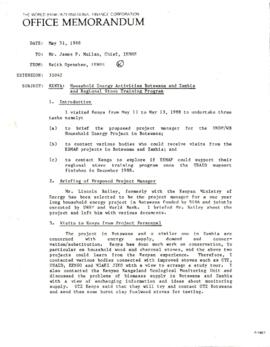
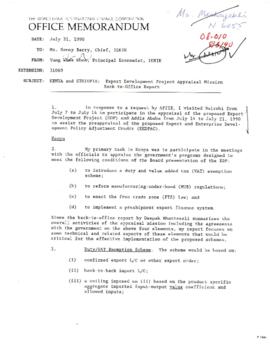
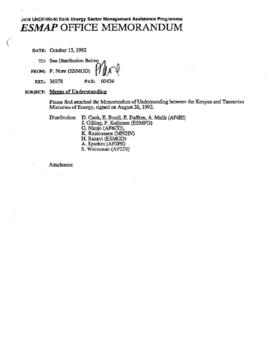

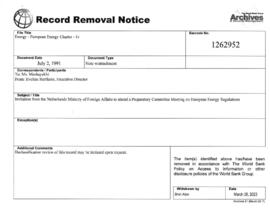



![Energy Sector Management Assistance Program [ESMAP] - Project Management Records - Miscellaneous ...](/uploads/r/world-bank-group-archives/f/c/d/fcd2e4c4aeac3bc98b9c124df8e59a1f01d87f036ece7053b15198acd01afb72/WorldBankGroupArchivesFolder1136960_142.jpg)
![United Nations Development Programme [UNDP] - Energy Sector Management Assistance Programme [ESMA...](/uploads/r/world-bank-group-archives/a/1/0/a10265d18f394de64f6022a9b49e9561191c8bd834f69d9b83052c507072c681/WorldBankGroupArchivesFolder1123154_142.jpg)
![UNDP - INT/83/005 - Energy Sector Management Assistance Programme [ESMAP] - 1981 / 1983 Correspon...](/uploads/r/world-bank-group-archives/2/7/8/2780a82fdc50156161af536e2653e185982fb9716bf19519a68d86c626e0d53f/WorldBankGroupArchivesFolder1181086_142.jpg)
![UNDP - INT/83/005 - Energy Sector Management Assistance Programme [ESMAP] - 1984 / 1986 Correspon...](/uploads/r/world-bank-group-archives/f/9/5/f9547b6aa178ccb3078b7cba29ca6ba624b7a41a5af124ba36245c091e7079c5/WorldBankGroupArchivesFolder1181087_142.jpg)
![UNDP - INT/83/005 - Energy Sector Management Assistance Programme [ESMAP] - 1984 / 1986 Correspon...](/uploads/r/world-bank-group-archives/6/d/d/6dda3a0cda2d42b1d28c8425a048c45a15652e6b47c7f1f2f436e2d052472a63/WorldBankGroupArchivesFolder30189795_142.jpg)
![UNDP - INT/83/005 - Energy Sector Management Assistance Programme [ESMAP] - 1984 / 1986 Correspon...](/uploads/r/world-bank-group-archives/4/2/e/42eec1c8e02730d8f0ff628e3d17b1a925c4900f11a73790b5d3b1d217c5a339/WorldBankGroupArchivesFolder30189796_142.jpg)
![UNDP - INT/83/005 - Energy Sector Management Assistance Programme [ESMAP] - 1984 / 1986 Correspon...](/uploads/r/world-bank-group-archives/6/e/1/6e17e3f54c4c845a97f3f9c8bf6b615b2944f158c6b61262d8051fa312fcab68/WorldBankGroupArchivesFolder30189793_142.jpg)
![UNDP - INT/83/005 - Energy Sector Management Assistance Programme [ESMAP] - 1984 / 1986 Correspon...](/uploads/r/world-bank-group-archives/3/d/8/3d8f6eac4e77cca8125752eca8b7ea4d00b8ed1757f547384969af1fbe6b6045/WorldBankGroupArchivesFolder30189792_142.jpg)
![UNDP - INT/83/005 - Energy Sector Management Assistance Programme [ESMAP] - 1984 / 1986 Correspon...](/uploads/r/world-bank-group-archives/0/5/2/05282c7e6170e58c67aeb3f4e1eb1af23702664fe202c547c5b28f929d5795f4/WorldBankGroupArchivesFolder30189798_142.jpg)
![UNDP - INT/83/005 - Energy Sector Management Assistance Programme [ESMAP] - 1984 / 1986 Correspon...](/uploads/r/world-bank-group-archives/1/f/a/1fa9991417d41712092943b3636e82624eced9f2397f96cde4fb78aa458f03f5/WorldBankGroupArchivesFolder30189794_142.jpg)
![UNDP - INT/83/005 - Energy Sector Management Assistance Programme [ESMAP] - 1984 / 1986 Correspon...](/uploads/r/world-bank-group-archives/8/3/2/8327a74f3310f2a6dd11fe8b9d6ce7796a1202fc4f31ad3700697eeed851808d/WorldBankGroupArchivesFolder30189797_142.jpg)
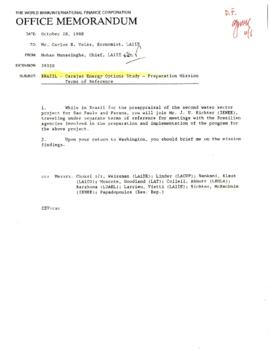
![Environment - Coal Issues - [IENGU] - Correspondence](/uploads/r/world-bank-group-archives/8/a/7/8a7df0fc7fc564af42c6ce750dfaaf9a9ea78f4313ea2aa056389fe1fa415dd2/WorldBankGroupArchivesfolder1262989_142.jpg)

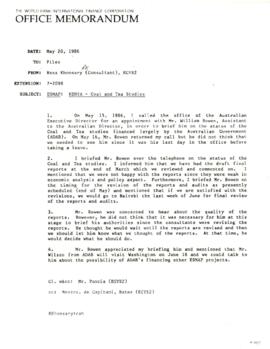
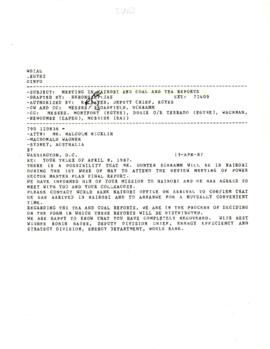
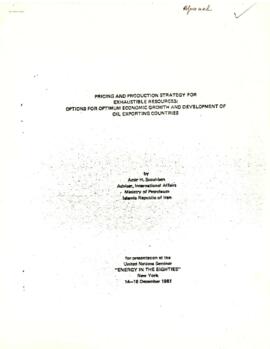


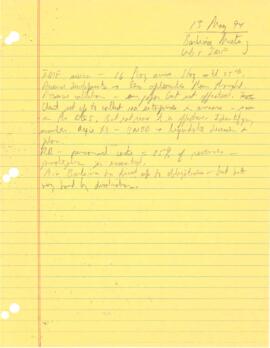


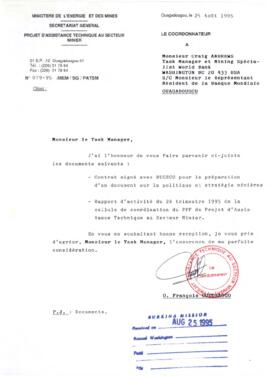
![Energy Sector Management Assistance Programme [ESMAP] Donors - The Netherlands - Correspondence](/uploads/r/world-bank-group-archives/c/9/5/c955e3362ddc2098a5839919ef4c2813c3d3f847fb94eb1909d3b9c7a3475e9d/WorldBankGroupArchivesFolder30189643_142.jpg)
![Energy Sector Management Assistance Programme [ESMAP] Donors - Cofinancing - Correspondence](/uploads/r/world-bank-group-archives/c/f/e/cfea7a29cd14471cf318eff01d724d717ba32f156f1d24e24dfcd104ea8e7a96/WorldBankGroupArchivesFolder30189670_142.jpg)
![Energy Sector Management Assistance Programme [ESMAP] Donors -African Development Bank - Correspo...](/uploads/r/world-bank-group-archives/1/1/3/11376934fa863193c000ee2504fefb7eb88910d95b64212c86b8983d7cc3e592/WorldBankGroupArchivesFolder1155891_142.jpg)
![Energy Sector Management Assistance Programme [ESMAP] Donors - Asian Development Bank - Correspon...](/uploads/r/world-bank-group-archives/f/c/4/fc414cfcce6409c1600c14c5d3f89594801f0dcc2ef7a26beb7d7ed5e815fa97/WorldBankGroupArchivesFolder30189625_142.jpg)
![Energy Sector Management Assistance Programme [ESMAP] Donors - Australia - Correspondence](/uploads/r/world-bank-group-archives/4/0/b/40bf9d37be80bfc6bcd9375dfd7c5275bcaca4b64d139f6250b190c92ed5940c/WorldBankGroupArchivesFolder30189626_142.jpg)
![Energy Sector Management Assistance Programme [ESMAP] Donors - Belgium (EEC) - Correspondence](/uploads/r/world-bank-group-archives/8/c/e/8cea433467d667feece192c0430b3390f80bfd94fd6922d1a5e73a381008e875/WorldBankGroupArchivesFolder30189629_142.jpg)
![Energy Sector Management Assistance Programme [ESMAP] Donors - Canada - Canadian International De...](/uploads/r/world-bank-group-archives/4/a/9/4a9feaa00f3cc14d17098722725ce02860bd4a1491ed0620481c70311af9a67a/WorldBankGroupArchivesFolder30189630_142.jpg)
![Energy Sector Management Assistance Programme [ESMAP] Donors - Canada - Canadian International De...](/uploads/r/world-bank-group-archives/1/a/3/1a3c21e85d072277d85360268c39732045a05ed67167762ad3d8aeb794606afe/WorldBankGroupArchivesFolder30189631_142.jpg)
![Energy Sector Management Assistance Programme [ESMAP] Donors - France - Correspondence](/uploads/r/world-bank-group-archives/3/c/7/3c72fdf4a96b7d46ab8e52a2847fbaaba6630142ee1b0d09ee301aaae5aeabf1/WorldBankGroupArchivesFolder30189635_142.jpg)
![Energy Sector Management Assistance Programme [ESMAP] Donors - Germany - Gesellschaft fuer Techni...](/uploads/r/world-bank-group-archives/b/0/9/b0969d279516cf4c4fd680b03c09f457a96c2a1a91a7989c59c7ee9625dacccc/WorldBankGroupArchivesFolder30189637_142.jpg)
![Energy Sector Management Assistance Programme [ESMAP] Donors - International Labour Office [ILO] ...](/uploads/r/world-bank-group-archives/f/1/b/f1bd1e23237d8445793ebe4c931cadc304bd03dcff9c27d4ca6bf567c063f802/WorldBankGroupArchivesFolder30189639_142.jpg)